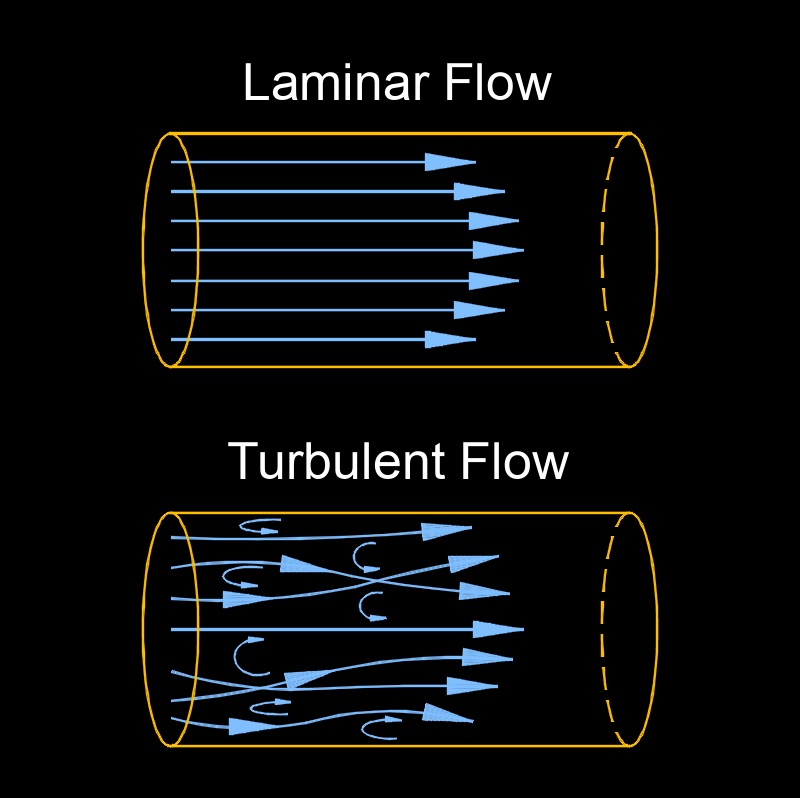Reynolds Number
Reynolds Number Formula |
||
|
\( Re \;=\; \dfrac{\rho \cdot v \cdot l_c }{ \mu } \) (Reynolds Number) \( \rho \;=\; \dfrac{Re \cdot \mu }{ v \cdot l_c} \) \( v \;=\; \dfrac{Re \cdot \mu }{ \rho \cdot l_c } \) \( l_c \;=\; \dfrac{ Re \cdot \mu }{ \rho \cdot v } \) \( \mu \;=\; \dfrac {\rho \cdot v \cdot l_c }{ Re } \) |
||
| Symbol | English | Metric |
| \( Re \) = Reynolds Number | \( dimensionless \) | \( dimensionless \) |
| \( \rho \) (Greek symbol rho) = Fluid Density | \( lbm \;/\; ft^3 \) | \( kg \;/\; m^3 \) |
| \( v \) = Fluid Velocity | \( ft \;/\; sec \) | \( m \;/\; s \) |
| \( l_c \) = Characteristic Length or Diameter of Fluid Flow | \( in \) | \( mm \) |
| \( \mu \) (Greek symbol mu) = Fluid Dynamic Viscosity | \( lbf-sec \;/\; ft^2\) | \( Pa-s \) |

Reynolds number, abbreviated as Re, a dimensionless number, measures the ratio of inertial forces (forces that remain at rest or in uniform motion) to viscosity forces in the fluid flow (the resistance to flow). It is used to predict the flow regimes of a fluid or gas.
The exact thresholds (2000 or 4000) can vary slightly depending on the system, like flow in a pipe vs. over a flat plate, but the concept remains: small Re means smooth flow, large Re means chaotic flow. Engineers use it to design pipes, airfoils, or even predict how blood flows in arteries. For example, in a pipe, a low Re might mean less energy loss but slower transport, while a high Re could increase mixing but also friction.
It's important to note that these Reynolds number ranges are general guidelines, and the transition from laminar to turbulent flow can be influenced by factors such as surface roughness, disturbances, and the specific geometry of the flow.

